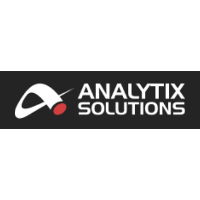
Top Banking Software Development Companies
Welcome to our comprehensive guide to the top Banking Software Development Companies! In today’s rapidly evolving financial landscape, technology plays a crucial role in driving innovation and enhancing customer experiences in the banking sector. Our curated list features the leading companies specializing in developing innovative software solutions tailored specifically for banks and financial institutions. From core banking systems and digital banking platforms to payment processing solutions and fraud detection software, these companies offer a diverse range of products and services to meet the unique needs of the banking industry. With detailed reviews and insights, we empower you to make informed decisions and choose the best partner for your banking technology needs.
List of the Best Banking Software Development Companies

-
Employees: 2 to 10
-
Min. Project amount: $25000
-
Country: USA

Foojee
-
Employees: 2 to 10
-
Min. Project amount: $25000
-
Country: USA

Analytix
-
Employees: 500 to 1,000
-
Min. Project amount: $25000
-
Country: U.S.A

Envoy
-
Employees: 51 to 200
-
Min. Project amount: $25000
-
Country: U.S.A

Darkroom
-
Employees: 51 to 200
-
Min. Project amount: $25000
-
Country: U.S.A
IntelliSoft Technologies
-
Employees: 51 to 200
-
Min. Project amount: $25000
-
Country: usa

Vinnove
-
Employees: 1 to 10
-
Min. Project amount: $25000
-
Country: USA

Y&L Consulting, Inc
-
Employees: 201 to 500
-
Min. Project amount: $25000
-
Country: USA

Agilis Tech Labs
-
Employees: 11 to 50
-
Min. Project amount: $25000
-
Country: USA

Apps Hunts
-
Employees: 11 to 50
-
Min. Project amount: $25000
-
Country: USA
** Buyer's Guide **
- 1. What are the key factors to consider when choosing a banking software development company?
- 2. Can banking software development companies customize their solutions to meet the specific needs of our bank or financial institution?
- 3. How secure are the banking software solutions offered by these companies in terms of protecting sensitive customer data and preventing cyber threats?
- 4. Can banking software solutions seamlessly integrate with existing systems and third-party applications used by our bank?
- 5. What are the typical timelines for developing and deploying banking software solutions?
- 6. What compliance and regulatory standards do banking software development companies adhere to?
- 7. What post-deployment support and maintenance services do banking software development companies offer?
- 8. What emerging technologies do banking software development companies leverage to improve banking systems?
1.What are the key factors to consider when choosing a banking software development company?
Key factors to consider include the company’s experience and expertise in the banking industry, the range of software solutions offered, compliance with industry regulations, security measures implemented, scalability of the solutions, and customer support services provided.
Here’s a detailed breakdown of the key factors to consider when choosing a banking software development company:
Experience and Expertise in Banking:
- Industry Knowledge: Look for a company with a proven track record of success in the banking industry. They should have a deep understanding of the specific challenges and regulations faced by banks.
- Domain Expertise: Consider their experience with specific areas you require, such as core banking systems, mobile banking solutions, or wealth management platforms.
- Case Studies and References: Request case studies showcasing their work for similar financial institutions. Speak to references to get firsthand insights into their experience working with the company.
Software Solutions Offered:
- Range of Services: Evaluate if the company offers a comprehensive suite of solutions or specializes in specific areas. Ensure they cater to your specific needs, whether it’s developing a custom core banking system, integrating with existing platforms, or creating mobile banking applications.
- Customization Capabilities: Not all banks have the same needs. Look for a company that offers customizable solutions that can be tailored to your unique requirements and integrate seamlessly with your existing infrastructure.
- Future-Proof Technology: The banking sector is constantly evolving. Choose a company that leverages cutting-edge technologies like cloud computing, artificial intelligence, and blockchain to ensure your solutions are future-proof.
Compliance with Industry Regulations:
- Regulatory Landscape: The banking industry is heavily regulated. The development company should have a thorough understanding of relevant regulations, such as PCI DSS, KYC, and AML.
- Compliance Expertise: Ensure they have a proven track record of developing solutions that comply with all applicable banking regulations and data security standards.
- Regular Security Audits: Look for a company that conducts regular security audits of their own systems and development processes to minimize security risks.
Security Measures Implemented:
- Data Security Protocols: Banking software handles sensitive customer data. The company should have robust security measures in place, including data encryption, access controls, and intrusion detection systems.
- Disaster Recovery Plans: In the event of unforeseen circumstances, ensure they have a comprehensive disaster recovery plan to minimize downtime and protect critical data.
- Penetration Testing: Look for a company that regularly conducts penetration testing to identify and address potential security vulnerabilities in their software.
Scalability of Solutions:
- Meeting Growth Needs: Banks are dynamic entities. The software solution should be scalable to accommodate future growth and increased user demands.
- API Integrations: Ensure the software integrates seamlessly with existing systems and third-party applications using open APIs (application programming interfaces). This fosters flexibility and allows for future expansion.
- Adaptability to New Technologies: The banking landscape is constantly evolving. Choose a company that can adapt their solutions to integrate new technologies as they emerge.
Customer Support Services Provided:
- Implementation and Training: The development process doesn’t end with delivery. Look for a company that offers comprehensive implementation support, user training, and ongoing technical assistance.
- Maintenance and Support Plans: Software requires ongoing maintenance and updates. Choose a company with clear and transparent maintenance and support plans to ensure your software remains secure and functions optimally.
- Communication and Responsiveness: Effective communication is key. Evaluate the company’s responsiveness to inquiries and their ability to clearly explain technical concepts.
By carefully considering these key factors, you can choose a banking software development company that possesses the expertise, technology, and commitment to security to deliver solutions that meet your specific needs, ensure regulatory compliance, and empower your bank to thrive in the ever-evolving financial landscape.
2.Can banking software development companies customize their solutions to meet the specific needs of our bank or financial institution?
Yes, reputable banking software development companies understand that each bank or financial institution has unique requirements. They typically offer customizable solutions that can be tailored to align with the specific workflows, processes, and business objectives of their clients.
You’re absolutely right! Customization is a hallmark of reputable banking software development companies. Here’s how they tailor their solutions to meet the specific needs of your financial institution:
One-Size-Doesn’t-Fit-All: Tailoring Banking Software to Your Unique Needs
The beauty of working with a qualified banking software development company lies in their ability to create solutions that perfectly align with your bank’s distinct character. Here’s how customization comes into play:
Understanding Your Business: The development process begins with a thorough needs assessment. The company will work with you to understand your specific workflows, operational processes, and business objectives.
Configurable Solutions: Many core banking systems and software solutions come equipped with modular components. These components can be selected and configured to match your specific functionalities and user requirements.
Custom Development: For highly specialized needs or unique integrations, some companies offer custom development services. This allows them to create bespoke software features or functionalities that cater to your specific requirements.
API Integrations: Modern banking software leverages APIs (application programming interfaces) to connect seamlessly with existing systems and third-party applications. Customization extends to configuring these integrations to ensure smooth data flow and efficient communication between your various platforms.
User Interface (UI) and User Experience (UX) Customization: Tailor the user interface to match your branding and ensure an intuitive user experience for your staff and customers.
Benefits of Customization:
- Optimized Workflows: Streamline your operations by implementing software functionalities that directly address your bank’s specific workflows and processes.
- Enhanced User Experience: Create a user-friendly interface for both staff and customers, fostering efficient interactions and improving overall satisfaction.
- Competitive Advantage: Develop unique features or functionalities that differentiate your bank from competitors and enhance your value proposition.
Finding the Right Fit:
Discuss Customization Options: When evaluating potential banking software development companies, inquire about their customization capabilities. Discuss your specific needs and ensure they have the expertise to tailor their solutions accordingly.
Case Studies and References: Review case studies showcasing how the company has customized solutions for clients in similar industries. Speak to references to gain insights into their experience with the customization process.
By partnering with a banking software development company that prioritizes customization, you can ensure that your bank benefits from software solutions that perfectly align with your unique needs, optimize operations, and empower you to achieve your strategic goals.
3.How secure are the banking software solutions offered by these companies in terms of protecting sensitive customer data and preventing cyber threats?
Top banking software development companies prioritize security and implement robust measures to protect sensitive customer data and prevent cyber threats. Look for companies that adhere to industry best practices and compliance standards such as PCI DSS and ISO 27001.
You’re absolutely right. Security is paramount in the world of banking software. Reputable development companies prioritize data protection and implement robust security measures to safeguard sensitive customer information and combat cyber threats. Here’s what to look for:
Fort Knox for Finance: Unlocking Security Features in Banking Software Solutions
Customer trust is the foundation of any financial institution. In today’s digital age, that trust extends to the security measures protecting their data. Here’s how to ensure the banking software you choose prioritizes security:
Industry Standards and Compliance: Look for companies that adhere to industry best practices and strict compliance standards like PCI DSS (Payment Card Industry Data Security Standard) and ISO 27001 (Information Security Management). These standards outline comprehensive security protocols for data handling, access controls, and risk management.
Data Encryption: Sensitive data should be encrypted both at rest (stored on servers) and in transit (traveling between systems). The company should utilize strong encryption algorithms like AES-256 to render data unreadable even if intercepted by unauthorized parties.
Access Controls: Watertight access controls are essential. Multi-factor authentication (MFA) should be implemented for user logins, requiring additional verification factors beyond passwords to prevent unauthorized access. Additionally, role-based access controls (RBAC) should be enforced, granting users access only to the data and functionalities necessary for their specific roles.
Regular Security Audits and Penetration Testing: Just like updating your phone’s operating system, software requires regular security updates to patch vulnerabilities and address potential security risks. Look for a company with a commitment to ongoing security audits and prompt deployment of software updates. They should also conduct regular penetration testing to proactively identify and address potential security weaknesses in their systems.
Secure Development Practices: The security of the software starts from the development stage itself. Look for companies that employ secure coding practices and utilize secure development lifecycles (SDLC) to minimize vulnerabilities from the get-go.
Disaster Recovery Plans: In the event of unforeseen circumstances, ensure the company has a comprehensive disaster recovery plan to minimize downtime, protect critical data, and ensure business continuity.
Building a Security Culture:
Employee Training: Security is a shared responsibility. The development company should provide training programs for their staff on security best practices and data handling procedures.
Transparency and Communication: Look for a company that is transparent about their security practices and provides clear communication regarding any potential security incidents.
By prioritizing security and partnering with a banking software development company that implements robust security measures, you can ensure your bank safeguards customer information, maintains trust, and minimizes the risk of cyberattacks.
4.Can banking software solutions seamlessly integrate with existing systems and third-party applications used by our bank?
Yes, leading banking software development companies offer solutions that are designed to integrate seamlessly with existing systems and third-party applications, such as core banking systems, CRM platforms, and payment gateways. Integration capabilities ensure smooth data exchange and interoperability.
Integration is key for modern banking software solutions. Here’s how these solutions connect seamlessly with your existing infrastructure:
Bridging the Gaps: Ensuring Seamless Integration with Existing Systems
No bank operates in a technological silo. Modern banking software solutions understand this and are designed to integrate harmoniously with your existing systems and third-party applications:
Core Banking System Integration: The core banking system acts as the backbone of your bank’s operations. Leading software solutions integrate seamlessly with existing core banking systems, ensuring smooth data exchange and eliminating the need for manual data entry.
Third-Party Applications: Banks leverage a variety of third-party applications, from CRM platforms for customer relationship management to payment gateways for secure online transactions. Modern banking software offers integration capabilities with these applications through open APIs (application programming interfaces). APIs allow for standardized data exchange, ensuring smooth communication and efficient workflows.
Custom Integrations: For highly specialized needs, some companies offer custom integration services. This allows them to tailor integrations to connect your banking software with legacy systems or unique third-party applications you utilize.
Benefits of Seamless Integration:
- Streamlined Workflows: Eliminate manual data entry and redundant processes by enabling automated data exchange between your various systems.
- Improved Efficiency: Integrated solutions allow for smoother information flow, optimizing operational efficiency and reducing processing times.
- Enhanced Customer Experience: Integrations with CRM platforms or customer service applications empower you to provide a more personalized and efficient customer experience.
- Data Consistency: Seamless integrations ensure data accuracy and consistency across all your platforms, minimizing errors and discrepancies.
Finding the Right Integration Fit:
Evaluate API Capabilities: When evaluating banking software development companies, inquire about their API integration capabilities. Ensure they offer open APIs that can connect with the specific systems and applications you utilize.
Discuss Integration Needs: Clearly communicate your integration requirements to potential development partners. This allows them to assess your needs and propose solutions that ensure seamless interoperability with your existing infrastructure.
By prioritizing integration capabilities, you can ensure that your new banking software solution integrates seamlessly with your existing systems and third-party applications, fostering a unified technological ecosystem that streamlines operations, enhances efficiency, and empowers you to deliver a superior customer experience.
5. What are the typical timelines for developing and deploying banking software solutions?
The timeline for developing and deploying banking software depends on factors, like the complexity, the level of customisation, and the features required. On average, a basic banking software solution can take 6 to 12 months to develop. However, more complex systems with extensive integrations, regulatory compliance features, and custom functionalities may take up to 12 to 24 months. Timely communication and a clear understanding of the bank’s requirements can help streamline the process.
6. What compliance and regulatory standards do banking software development companies adhere to?
The timeline for developing and deploying banking software depends on factors, like the complexity, the level of customisation, and the features required. On average, a basic banking software solution can take 6 to 12 months to develop. However, more complex systems with extensive integrations, regulatory compliance features, and custom functionalities may take up to 12 to 24 months. Timely communication and a clear understanding of the bank’s requirements can help streamline the process.
7. What post-deployment support and maintenance services do banking software development companies offer?
Post-deployment support is essential for the smooth functioning of banking software. Most companies offer comprehensive support services, including:
- Ongoing software updates to keep up with new security protocols and compliance requirements.
- Bug fixing and troubleshooting to resolve any issues that arise after deployment.
- Technical support via phone, email, or live chat to address user concerns in real time.
- System monitoring to ensure optimal performance and prevent downtime.
Training and documentation to help bank staff effectively use the new software.
8. What emerging technologies do banking software development companies leverage to improve banking systems?
Banking software development companies rely on emerging technologies to enhance the functionality, security, and customer experience of banking systems. Some of these technologies include:
- Blockchain for secure, transparent, and tamper-proof transactions.
- Artificial Intelligence (AI) and Machine Learning (ML) offer personalised financial services, detect fraud, and enhance decision-making.
- Cloud computing for scalable and cost-effective solutions that allow banks to store and process large amounts of data securely.
- Robotic Process Automation (RPA) to automate routine tasks, reducing operational costs and improving efficiency.
Biometrics for secure and seamless customer authentication, like facial recognition and fingerprint scanning.



